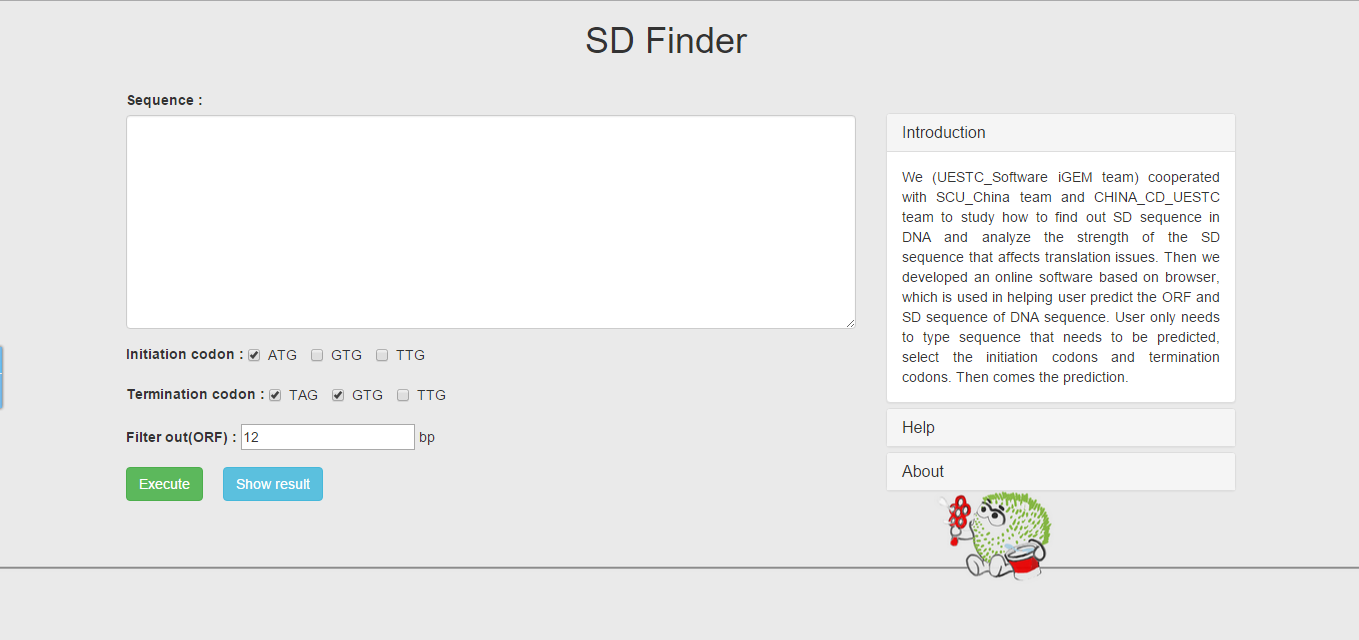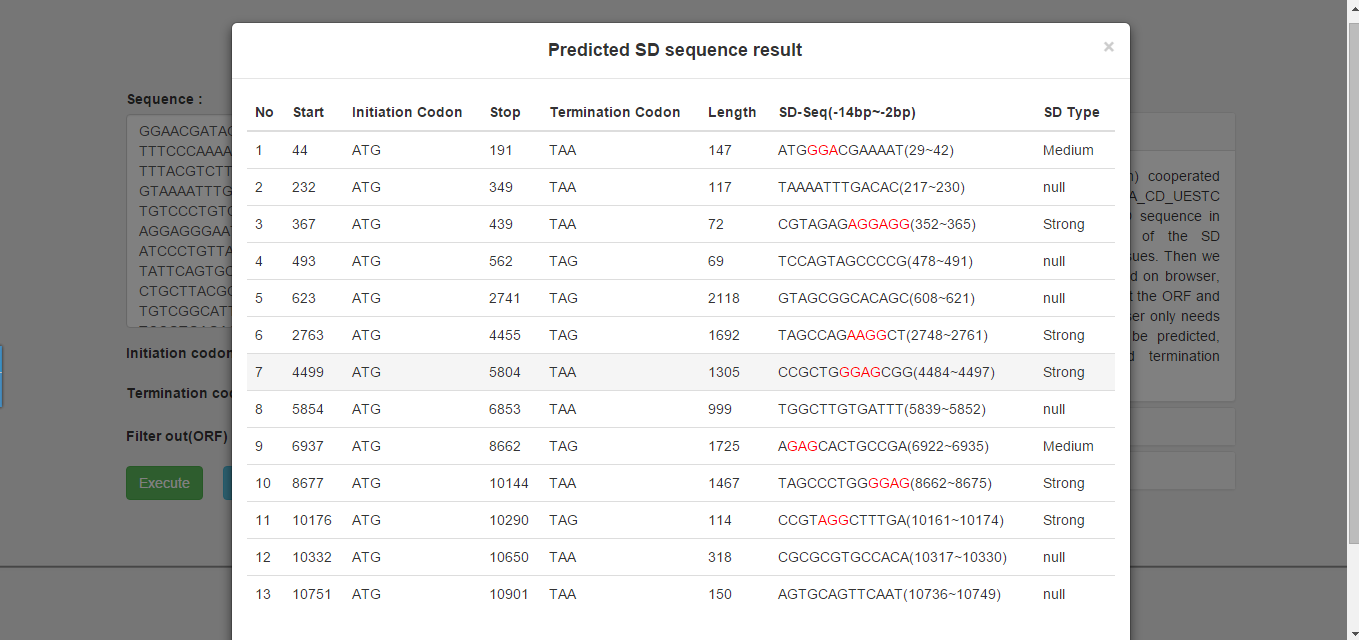Difference between revisions of "Team:UESTC Software/Collaborations.html"
| Line 70: | Line 70: | ||
</div> | </div> | ||
<section class="cd_half_section" id="c_h_s_meet"> | <section class="cd_half_section" id="c_h_s_meet"> | ||
| − | <h1> | + | <h1>Collaboration</h1> |
</section> | </section> | ||
<section class="cd-section"> | <section class="cd-section"> | ||
Revision as of 05:32, 28 August 2015
<!DOCTYPE html>
Collaboration
In August, we cooperated with SCU_China iGEM team to study how to find out SD sequence in DNA sequence and analyze the strength of the SD sequence that affects translation issues. Then we developed an online software based on browser—SD finder (Figure 1), which is used in helping user predict the ORF and SD sequence of DNA sequence. User only needs to type sequence that needs to be predicted, select the initiation codons and termination codons. Then comes the prediction.

Figure 1 online software based on browser—SD finder
We provide the related information about ORF and SD sequence in the result page (Figure 2). The column of SD sequence lists a 13bp sequence from -2 to -14 in ORF upstream. We also tag the position of SD sequence signals with red. And the last column lists the type of the strength of the SD sequence.

Figure 2 result page
